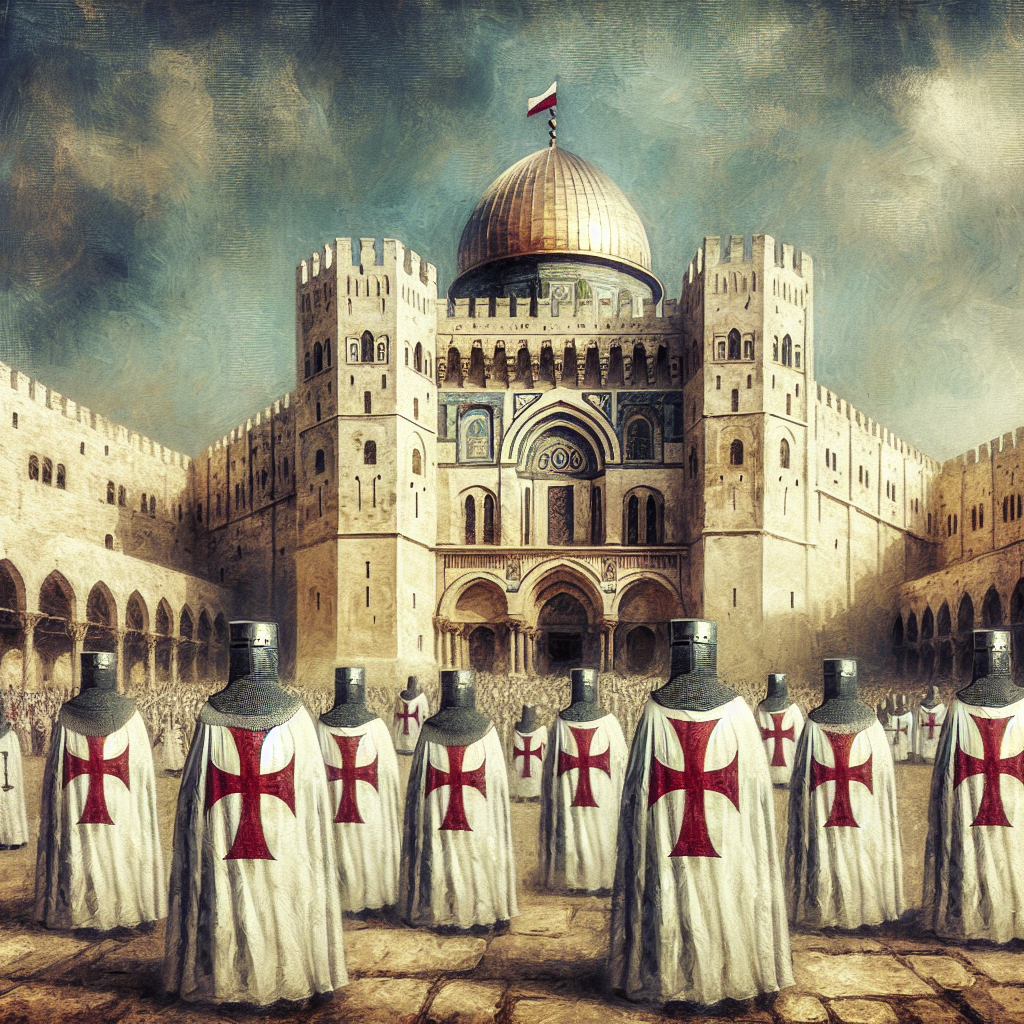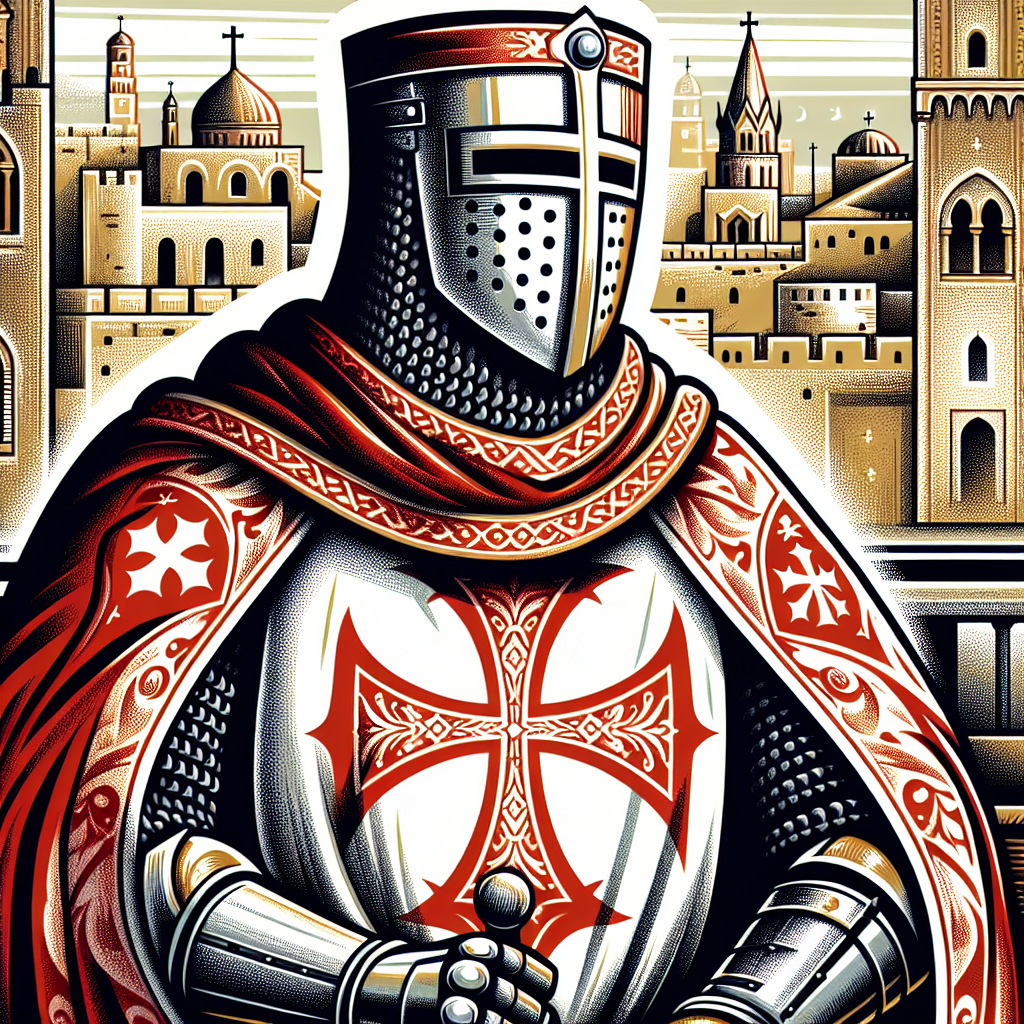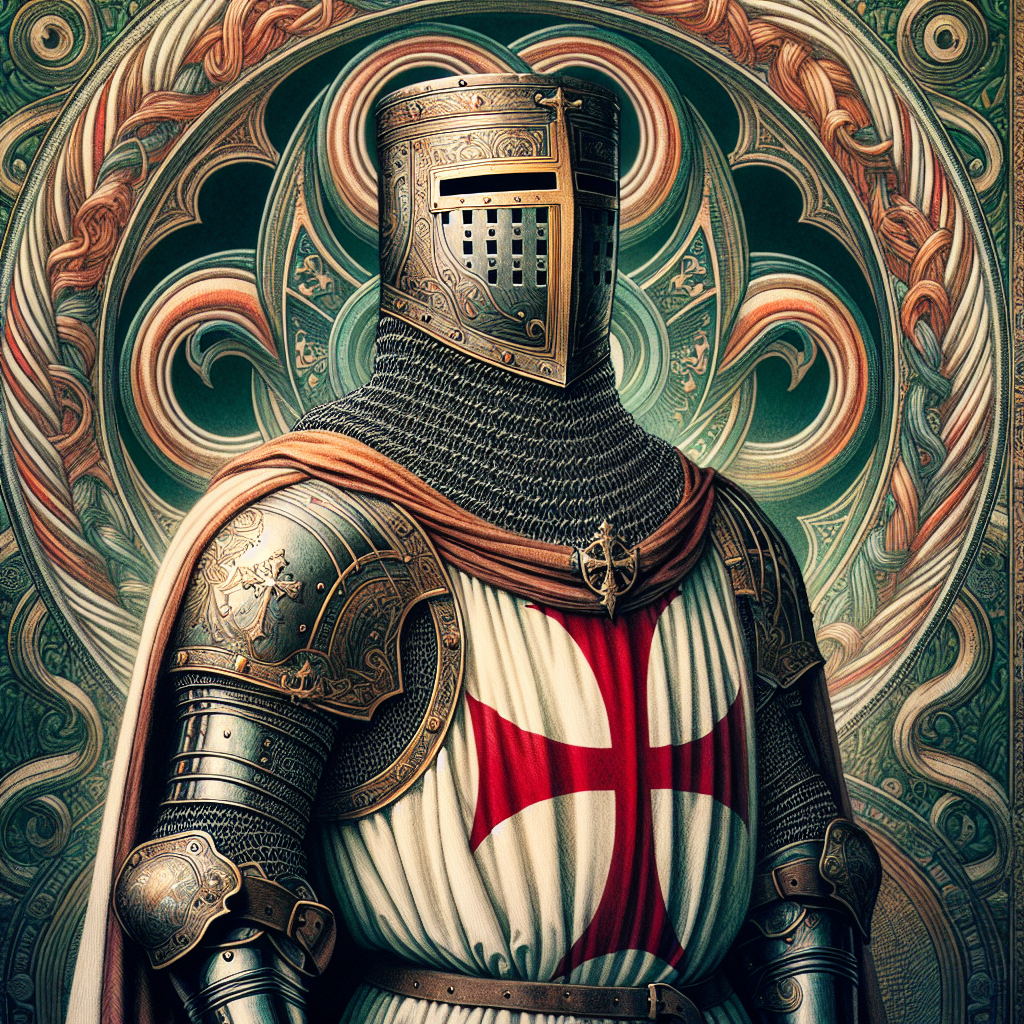
You’re about to immerse yourself into an intriguing historical journey while discovering more about an iconic order. The Knights Templar, a group shrouded in mystery, intrigue, and an eventful past. This article provides you with a detailed account of when the Knights Templar were formed, tracing its origins back in time to offer you a comprehensive look into their establishment. Stay with us and unravel the timeline of this fascinating organization.
Origins of the Knights Templar
Among the medieval military orders that arose during the time of the Crusades, the Knights Templar hold a special prominence in history. Their rapid rise to considerable power and influence, followed by their sudden fall, has made them subjects of much speculation, intrigue, and mystery.
Foundation and early development
The Knights Templar was officially formed in 1119 AD by a French knight, Hugues de Payens, and his companion, Godfrey de Saint-Omer. Coming from a noble background, these were men of virtue and valor who were deeply committed to their faith. Amid the political complexity and turmoil of Jerusalem, these men envisioned a novel concept – a religious order of warrior monks.
Origins in the Crusades
The birthplace of the Templar Order was the tumultuous land of Jerusalem, which was the central stage of the Crusades. This holy war fought against Muslims for control of the Holy Land led to the creation of the Templar knights. These knights initially came together to protect Christian pilgrims traveling to Jerusalem, thus intertwining their origins deep within the narrative of the Crusades.
Goals and objectives at founding
The original intentions of the Templar knights were altruistic and straightforward. They aimed to provide safety to Christian faithful journeying across territories threatened by constant conflicts. Their secondary objective was to directly participate in Crusades, thus serving their dual roles as monks and warriors.
Key Founding Figures
The foundation and early growth of the Knights Templar are credited to a few distinct figures who played pivotal roles in carving its path.
Hugh de Payens
Considered the first Grand Master of the Order, Hugh de Payens was the lifeblood of the Knights Templar. His leadership provided the cornerstone for the Templars, shaping their fundamental military and monastic characteristics.
Bernard of Clairvaux
Saint Bernard of Clairvaux, a respected Christian monk of his time, endorsed the Templar Order and helped shape its Rule. It was his influential support and recognition that assisted in gaining Papal approval for the fledgling order.
King Baldwin II of Jerusalem
Baldwin II, the then King of Jerusalem, recognized the strategic and religious importance of the Templar knights. He provided the knights with a headquarters in his royal palace, believed to be located on the sacred Temple Mount in Jerusalem.

Geographical Influence and Base
The Knights Templar marked their significance not only with their military might but also with their geographical expanse and strategic bases.
Headquarters at Temple Mount in Jerusalem
Their headquarters, located on Temple Mount in Jerusalem, held both strategic and symbolic significance. This site allowed them easy access to key territories while serving as a potent symbol of their commitment to safeguarding the holy land.
Expansion across Europe and the Middle East
Soon, their influence spread far beyond Jerusalem. They established commanderies, the basic units of Templar administrative division, across Europe and the Middle East. These outposts, strategic for both military and economic purposes, helped them expand their presence and consolidate their power.
Early Missions and Activities
Initially intended as a protective force for Christian pilgrims, the Knights Templar were heavily involved in the happenings of the Christian world.
Protection of Christian pilgrims
The Templars took it upon themselves to guard Christian pilgrims traveling to the Holy Land, ensuring their safety amid unpredictable surroundings. Their protective services were unpaid, aligning with their vows of poverty.
Participation in the Crusades
Their involvement was not limited to protection alone. As a military order, their responsibilities also encompassed active participation in the Crusades. The Templars featured prominently in many battles during the Crusades, playing both defensive and offensive roles.

Development of the Templar Order
The Order evolved rapidly in its few centuries of existence, shaping itself into a distinct entity.
Creation of Templar Rule
The Templar Rule or ‘The Rule of the Temple’ was a unique set of guidelines that governed the life and duties of every Templar knight. It established a strong and effective system, blending monastic discipline with military efficiency.
Growth of the Templar network
As time passed, the Templars expanded their network across different regions. They formed alliances and established commanderies in different countries, which allowed them to control vast territories and resources like never before.
Papal Recognition and Support
The Templar’s rise to power was significantly boosted by the backing of the Papacy.
Papal Bull ‘Omne Datum Optimum’
In 1139, Pope Innocent II issued an important document known as a Papal Bull, named ‘Omne Datum Optimum’. This gave the Templars unrestricted freedom, including immunity from local laws and authorities. They answered only to the Pope, providing them unrestricted mobility and exceptional autonomy.
Various conferment of privileges by Popes
Over time, successive popes conferred more privileges on the Knights Templar, granting them numerous economic benefits and ensuring their sovereign status.

Economic and Military Power
The Knights Templar were much more than monks and knights. They were shrewd businessmen and formidable warriors, creating a robust financial network and a fearsome military force.
Establishment of Templar financial network
Over time, the Templars built up a vast financial network, accruing breathtaking wealth and property across many countries. This established them as one of the leading financial powers of the Middle Ages, with the Templar Order in many ways pioneering early forms of banking.
Role as military order
Being a military order, the Templars were as much warriors as they were monks. They were trained in combat, maintained a strong military presence, and actively participated in the Crusades. Their prowess in battle was respected and feared.
Opposition and Controversy
Yet, power and prosperity often attract animosity and controversy. The Knights Templar were no exception.
Accusations of heresy
As their power grew, so did accusations of heresy and misconduct. Rumors circulated about secret rituals, idolatry, and unsavory practices, sparking widespread suspicion and discontent.
Conflict with other kingdoms and orders
The Templars often conflicted with other kingdoms and religio-military orders. These confrontations were driven by power dynamics, mutual suspicion, territorial disputes, and at times, differences in ideology.

Dissolution and Arrest of the Templars
However, all empires have their falls. In the case of the Templars, their downfall was sudden and shocking.
Arrest of Templars on Friday, October 13, 1307
On Friday, October 13, 1307, King Philip IV of France ordered the arrest of all Templars within his kingdom. This day is marked in history as the beginning of the end for the Knights Templar and the origin of the superstition surrounding ‘Friday the 13th’.
Suppression of the Templars by Pope Clement V
Under significant pressure from King Philip IV, Pope Clement V suppressed the Templar Order in 1312. Many Templars were tortured into forced confessions, their properties seized, and many knights executed – marking the abrupt end of a once powerful order.
Legacy of the Knights Templar
The Knights Templar ceased to exist, but they left an enduring legacy that bristles with tales of heroism and betrayal, faith and fallacy.
Influence on medieval Europe
The Templars played a consequential role in shaping medieval Europe. Their economic activities introduced banking systems, while their military actions influenced the outcomes of the Crusades. They left an indelible impact on European history and culture.
Modern interpretations and myths
The Templars’ sudden rise and fall have led to numerous interpretations, theories, and myths, making them a favorite subject in modern literature, film, and other media. They serve as symbols of mystery, adventure, and intrigue, with their stories inspiring a multitude of fictional works. Despite their fall, their legacy continues to be remembered and revered. In the end, the vibrant tale of the Knights Templar remains one of the most intriguing chapters of medieval history, ever immortalized in the annals of time.













